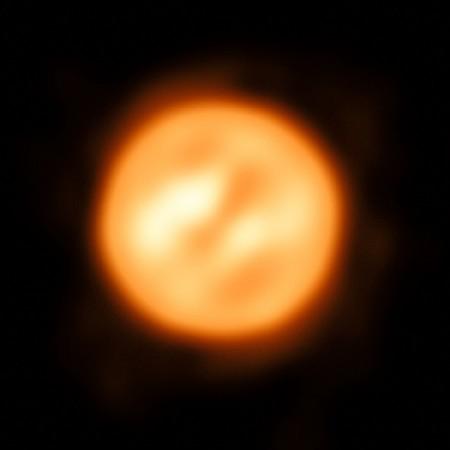
A supermassive alien star called Antares has been analysed with the help of three telescopes by a team of astronomers from Universidad Católica del Norte in Chile.
ALSO READ: Astrophysicists recreate 'diamond rains' similar to ice giants Uranus and Neptune
ALSO READ: NASA's HiRISE captures new spectacular image of snowy dunes on Martian surface: All you need to know
Here are the top things to know about Antares:
- The researchers used the European Southern Observatory's Very Large Telescope Interferometer (VLTI) in Chile to map the surface and also scale the movements of the surface materials taking place on Antares, which is also known as a red supergiant. The astronomers were looking forward to acquiring the best image of the surface and atmosphere of a star apart from the Sun.
- VLTI has the ability to combine light from up to four telescopes and create a virtual telescope that is equal to a single mirror up to 200 metres across. Hence it can help the astronomers achieve a very high resolution of distant bodies which can be analysed in great detail.
- Present in Scorpio constellation, Antares is located 620 light-years away from Earth. Compared to our Sun, its mass is 12 times greater and its diameter is 700 times more, these characteristics turn Antares into the biggest and brightest star that exists in our galaxy.
- The supermassive star Antares is in its final stage, it is a supergiant star as it is in its final phase of its life before it becomes a supernova, this process could take around thousands of years.
"How stars like Antares lose mass so quickly in the final phase of their evolution has been a problem for over half a century," said Keiichi Ohnaka.
"The VLTI is the only facility that can directly measure the gas motions in the extended atmosphere of Antares — a crucial step towards clarifying this problem. The next challenge is to identify what's driving the turbulent motions," Ohnaka added.

5. The researchers used an instrument called Astronomical Multi-BEam combiner (AMBER) to create different images of the red giant's surface over a small range of infrared wavelengths. These data were then utilised to calculate the pace of atmospheric gas at different positions on the star and the average speed over the entire star. The astronomers created a map for another star apart from our Sun, that portrays the relative speed of the atmospheric gas throughout the Antares disc.
6. The astronomers found that Antares' atmosphere was different because unlike stars like our Sun, in which the convection flows of extremely heated gases erupt near the cores of the star towards the surface, the red supergiant's turbulent, low-density gas erupted farther from the star than the models had predicted.
7. The astronomers concluded that the atmospheres of red supergiants must be having another type of process for the movement of materials which is yet to be known.
ALSO READ: NASA takes steps to save human civilisation from Yellowstone Supervolcano: 7 things to know
"In the future, this observing technique can be applied to different types of stars to study their surfaces and atmospheres in unprecedented detail. This has been limited to just the Sun up to now," concludes Ohnaka.
"Our work brings stellar astrophysics to a new dimension and opens an entirely new window to observe stars," Ohnaka concluded.
Watch video:










